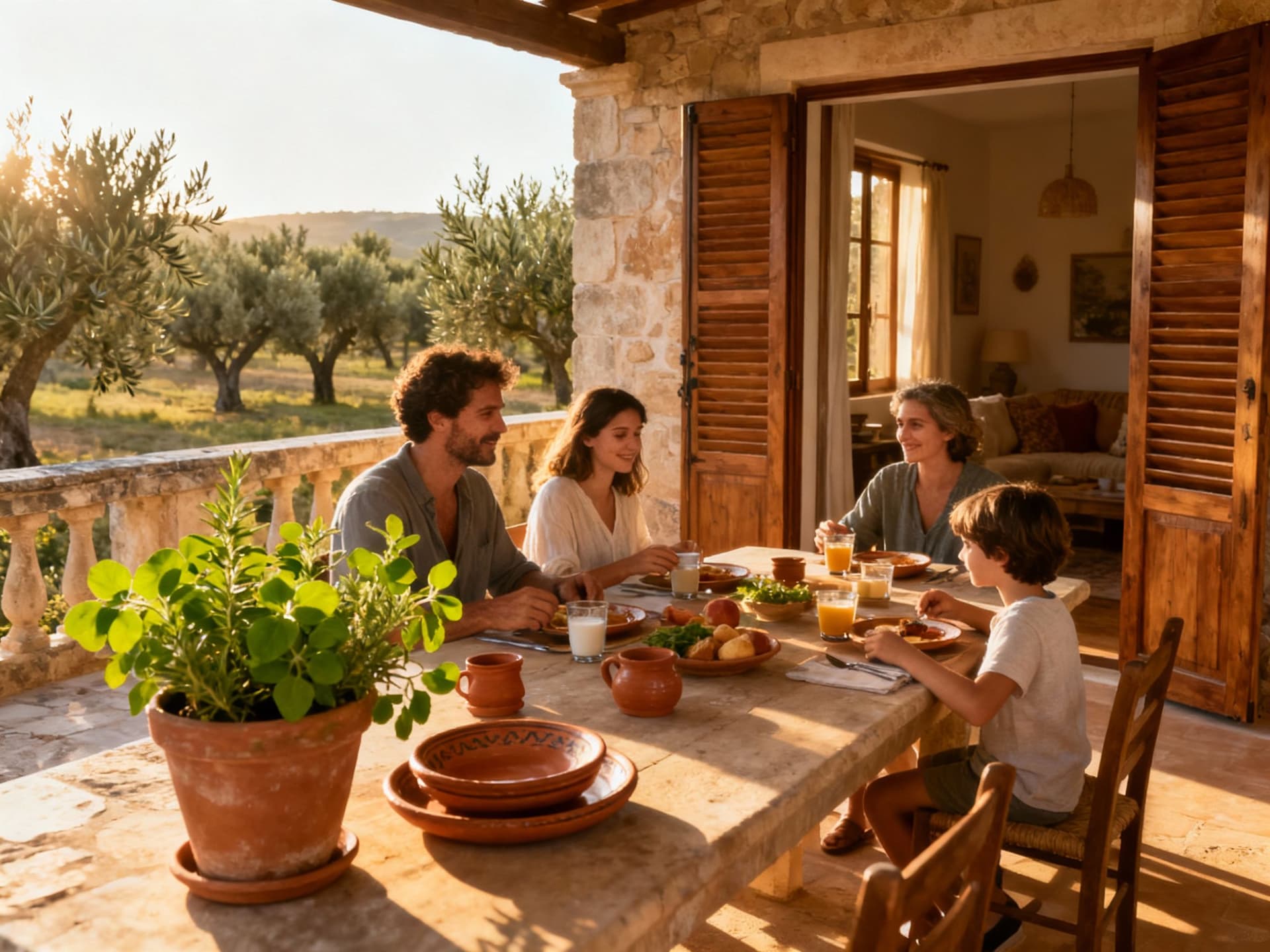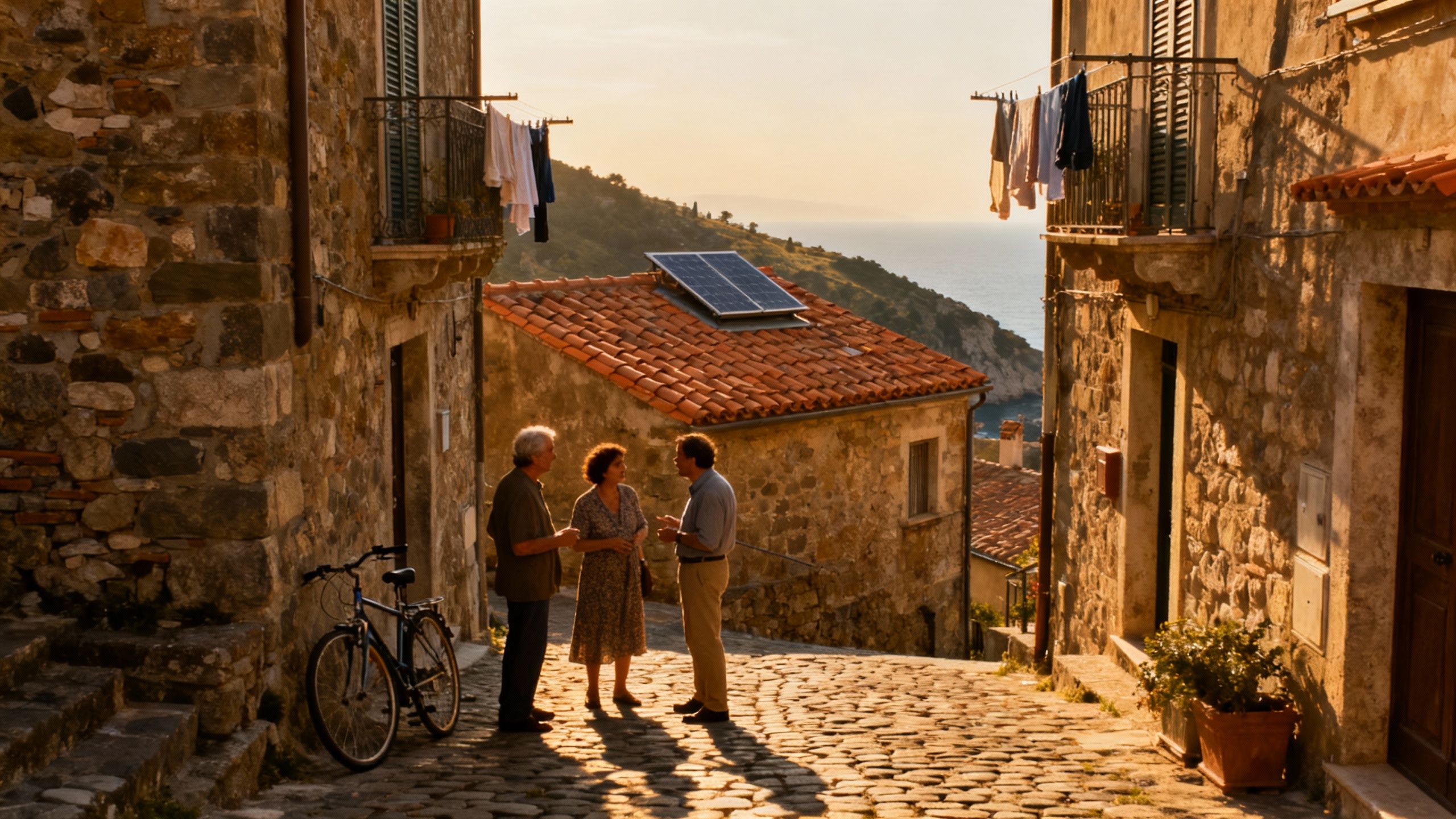Hidden rules that make Croatian homes cheaper than they seem
Small rituals—markets, stone terraces, island ferries—shape smart buying in Croatia. Pair sensory place‑finding with early checks on reciprocity, VAT vs transfer tax, and heritage permits.
Imagine an early morning in Split: espresso steam rises beside the Riva, fishing boats rock in the light, and a narrow stone lane opens onto a terrace where wild rosemary scents the air. Croatia lives in these small rituals—market stalls in Zadar, olive groves outside Rovinj, island summers thick with bougainvillea—and those rhythms shape what, where and how you buy.
Living the Croatia lifestyle

Daily life here moves with the sea, the market and the seasons. Mornings begin with small shops and bakeries—try the bakery-lined streets of Diocletian’s Palace in Split or the sleepy cafes along Dubrovnik’s Ploče—while evenings slow into long dinners, local wine and the sound of cicadas. For an eco-minded buyer, this is an invitation: seek stone houses with thick walls, north-facing terraces for summer shade, and gardens that capture rainwater and scent.
Neighborhood spotlight: Hvar town lanes to Istria’s hill villages
Hvar’s narrow lanes hum with tourist season energy but hide quiet courtyards perfect for off-season living; conversely, Istrian villages such as Grožnjan and Motovun offer truffle markets, stone farmhouses and a slower rhythm that suits regenerative gardening and low-energy retrofits. Those opposing energies tell you where to look depending on whether you want sociable summers or year-round, restorative life.
Food, markets and local rituals
Picture a Saturday at the Split fish market or a Sunday olive‑pressing in Dalmatia: food anchors community. For buyers, proximity to markets and local producers matters—not just for convenience but for a low‑impact lifestyle where seasonal food and social ties reduce your home’s ecological footprint.
- Lifestyle highlights: stone terraces, morning markets, island ferries, truffle walks, coastal swims, village festivals.
Making the move: practical considerations

Your dreamy lane meets paperwork at the notary. Croatia’s buying process rewards preparation: all buyers need an OIB tax number; EU/EEA/Swiss nationals largely buy like locals; non‑EU buyers usually require ministry consent under reciprocity rules. Recent shifts to property taxation also mean thinking beyond purchase price—annual property levies and incentives for long‑term rentals can affect your ownership math. For clarity, always check official guidance before you sign.
Property styles and what they mean for life
A seaside stone house with lime plaster keeps summers cool but often needs seismic and insulation upgrades; a modern seaside apartment can be turnkey but may carry 25% VAT if new. Decide whether you want restoration projects—perfect for traditional materials and passive cooling—or efficient new builds with solar and heat pumps. Each choice comes with different permits, costs and timelines.
How local experts protect your lifestyle vision
Work with a local team: lawyer fluent in English and local law, architect familiar with heritage permits, an agency that values regenerative features, and a notary who can explain transfer tax versus VAT.
Apply for your OIB and (if needed) ministry consent early—these administrative steps can add weeks to your timeline and are property‑specific.
Factor in tax realities: 3% real estate transfer tax for resale properties, 25% VAT on certain new builds, and evolving local property levies that may apply from 2025. Budget for legal fees, registration and conservation restrictions on coastal and protected properties.
Insider knowledge: what expats wish they'd known
Expat tales often begin with romance and end with a lesson: the house on a postcard may sit in a protected zone; the sunny terrace might need a road built; or reciprocity rules can turn an easy purchase into a corporate workaround. Local knowledge—where the ferry stops year‑round, which coves are accessible in winter, which municipalities favour sustainable renovations—changes outcomes more than negotiating skills.
Cultural integration, language and community
Croatians prize directness and hospitality; learning a handful of phrases and showing respect for local rhythms—market times, church festival dates, olive harvest schedules—opens doors. Join local associations, visit konobas outside tourist months, and volunteer at a village event to anchor yourself socially and ecologically.
Long‑term stewardship and seasonal thinking
Think beyond the purchase: choose measures that reduce running costs and support biodiversity—solar hot water, olive‑friendly landscaping, greywater reuse and native hedges that buffer wind. Seasonal realities matter: some islands quieten in winter and utilities behave differently; property managers familiar with off‑season care are invaluable.
- Red flags to watch for: unclear land registry entries, undeclared tourist‑rental permissions, coastline or heritage restrictions, properties with ongoing legal disputes, missing building permits for extensions.
- Step‑by‑step due diligence: 1) get OIB and pre‑check reciprocity; 2) commission land registry and title searches; 3) order technical survey and heritage check; 4) confirm permitted uses with local planning office; 5) include conditional clauses and escrow in contract.
Conclusion: Croatia rewards patience and local knowledge. If you begin with a sensory map—markets, lanes, sea breezes—and pair it with a team that understands reciprocity rules, VAT vs. transfer tax, and protected‑zone realities, you’ll not only buy a house, you’ll buy into a seasonal, regenerative life. When you’re ready, choose advisers who treat home as part of an ecosystem, and let the country’s rhythms guide the rest.
Dutch property strategist who helped 200+ families find sustainable homes in southern Europe; expert in legal pathways and long-term stewardship.


